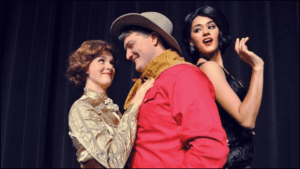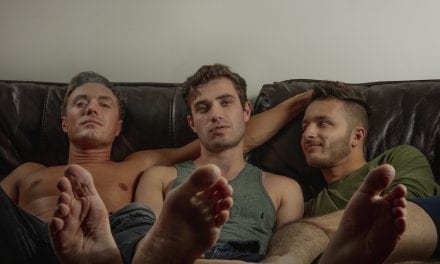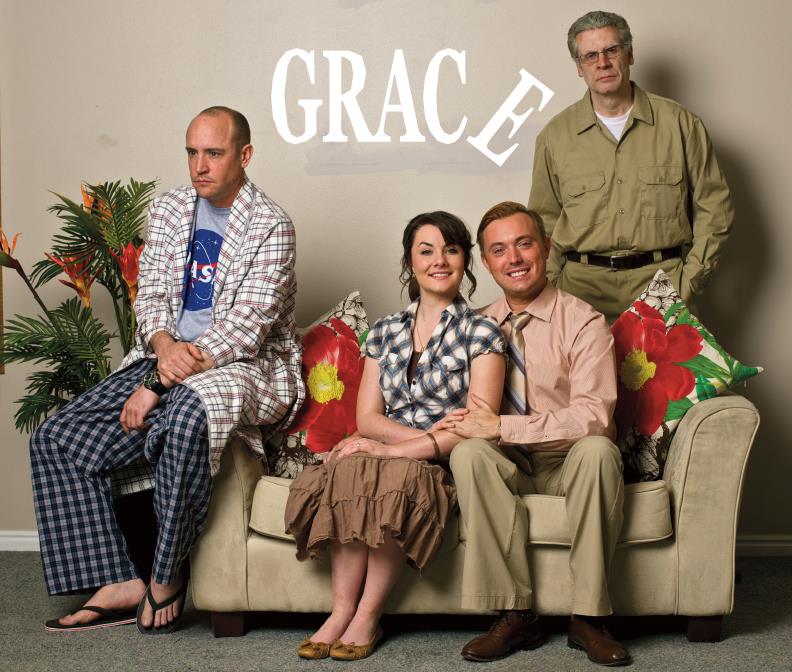OGDEN — The Will Rogers Follies, book by Peter Stone, with lyrics by Betty Comden and Adolph Green, and music by Cy Coleman, is a fascinating story of a man long forgotten to most young people today. The musical follows the life and times of the comedian and entertainer Will Rogers from his childhood in rural Oklahoma through his untimely death, and highlights his many accomplishments, his rise to fame (including a run for president) and his contributions to America. I was excited to see this award winning musical as it is rarely performed and a show that I had never seen before. It explores the role that entertainers play in society and how they help people to escape from the problems and troubles of the world, as was Will Rogers’s contributions in keeping people’s spirits high during the Great Depression. The musical is written in a presentational style and set at the Ziegfeld Follies for the entire show. It has all the elements of a good musical: great songs, spectacle, well-crafted scenes and the perfect balance between comedy and drama.

Show closes February 23, 2013.
Weber’s mounting of this musical was decent—Jim Christian’s direction of the show provided some strong points and generally lead to good acting with a talented cast and crew. Unfortunately the pacing of the show was extremely slow, and a lot of the humor fell flat. Many of the big numbers failed to reach the level of excitement and energy needed to really soar. This pacing was a fatal blow to the show that it could not recover from, even with a talented cast. The recurring note throughout the night I wanted to give was, “Pick up the pace!” The presentational style of the show and innate humor in the writing did not work at the pace it was presented and the dramatic scenes were consequently dreadfully slow.
B.J. Whimpey was a perfect casting choice for the title role of Will Rogers. Whimpey’s simple charm to him and a strong voice shined in “Never Met a Man I Didn’t Like” and “Give a Man Enough Rope.” He did a nice job of balancing the presentational style of the show by interacting with the audience at certain moments and then transitioning back into the scenes with full commitment when the fourth wall was not to be broken. I laughed out loud at the beginning of Act II when he invited an elderly gentleman to take his seat when he had entered the theater a few minutes late and was waiting by the door for an inconspicuous moment to sit back down. This level of spontaneity and good-natured fun lead to a strong performance by Whimpey. However, he was also responsible for a lot of the slow pacing of the show, as he has probably 70% of the lines and songs in the show. Rather than indulge in each moment, Whimpey needed to get on with it. Many of the scenes are written with “tongue and cheek jokes” along with physical humor. This farcical element to the show only works when it is quick and tight and the many long pauses, slow tempos and drawn out scenes caused a lot of the humor to be lost. As a result there wasn’t as great of a build in many of the scenes, particularly those scenes that should have lead up to a “show stopping number.” Whimpey does deserve some credit for his successful execution of many rope tricks throughout the show. This was no small feat and required numerous hours of rehearsal to execute them the way he did!
The strongest performance of the evening was delivered by Kalyn West who played the character called “Ziegfeld’s favorite.” West is a true triple threat, with strong singing, committed and believable acting, and superb dancing. It was always a pleasure to see her on stage and she brought a level of excitement that really energized each scene she was in. However, she wasn’t showcased as strongly as she could have been. Her dance abilities could have added a lot more to the show with more impressive choreography and greater showmanship. This would have been very appropriate for the Ziegfeld Follies medium that the show was written in.

B.J. Whimpey as Will Rogers and Lindsea Garside as Betty Blake Rogers. Photo by Alex Thedell.
This leads me to my second complaint of the show: Jim Christian’s choreography. The choreography was well executed by the dancers, and I especially enjoyed the rope tricks incorporated into the dance numbers. But this is the Ziegfeld Follies, and the choreography needed much greater spectacle and virtuoso. For the show to succeed, this cannot be toned down. The simplicity of the dancing, coupled with the slow pacing of the music failed to make the dances impress. There is one very notable exception to this and that is the number “Our Favorite Son.” This is a famous dance number in which the full cast is seated for the entire song performing choreography in a seated “chorus line” style dance. The cast was full of energy and truly “wowed” the audience with the spectacle of this number. The visual impressiveness of “Our Favorite Son” was what a lot of the other numbers were lacking.
A few other actors that deserve mentioning include Jeremy Dabbs as Will’s father (Clem Rogers) and Lindsea Garside as Betty Blake Rogers. Dabbs is truly a master of comedy and had a subtlety about him in his delivery that lead to many hysterical moments. He was grounded in his choices and listened and responded well to the other characters that he interacted with. He never “played for laughs” and was always committed to his objectives in each scene, delivering a solid performance. Garside had some nice moments and had a beautiful, well trained voice. However, I wanted more from her especially in her big solo numbers. Several of her torch songs, especially “No Man Left For Me,” needed to be energized. She played them too reserved and too safe. However, Garside acted the part well and she and Whimpey had nice chemistry between them providing a dimensional performance and relationship.
The band was one of the weakest elements of the show. I did not like the choice of having a makeshift orchestra pit literally cut into the middle of the downstage area. It created a distracting opening/obstacle that the cast had to dance and move around. A better choice would have been to put them on the side of the stage or backstage. Having the band on stage would have been very appropriate to the period and allowed for some creative acting moments where the cast could interact with the band members. The band seemed to be under rehearsed, sloppy, and often not together or in tune. A screeching trumpet really stood out and was reminiscent of a junior high school band concert. This significantly weakened the overall performance.
A second element that did not work was the sound system. I recognize that theaters are on budgets and have to work with what they have. However, Garside’s microphone worked intermittently throughout the show, and the general sound of the microphones sounded like they were coming out of a tin can, creating a very flat and unbalanced sound, most noticeably in the chorus numbers.
By contrast, the costumes were absolutely astounding. Catherine Zublin’s creativity, detail and array of colors used in her designs added much to the show. The costumes were on par or better than many professional theater productions and contributed greatly in creating the Ziegfeld Follies and vaudeville style in the show. Thanks to Zublin’s work, I had no trouble believing I was back in the 1930’s. The costuming and colors used in the number “Presents for Mrs. Rogers” were especially well designed and aided greatly in the success of this number.
Van Tinkham’s set design was adequate and created nice levels and variety to the show. The use of projections worked, but sometimes it seemed like I was watching a power point presentation as Will was telling his story. Generally speaking, fewer projections at the right moment would have made this convention more effective and less distracting.
I would recommend this show to the casual theatergoer that is looking for something new to do for a fun family night out. It is a feel-good musical that can be deemed a “family friendly show” and will share a good message and provide some laughs. However, for the trained theatergoer this show will drag and not measure up to the level of professionalism in many other productions throughout the state. Sadly, The Will Rogers Follies is not as strong as many of the productions I have seen at Weber State.





